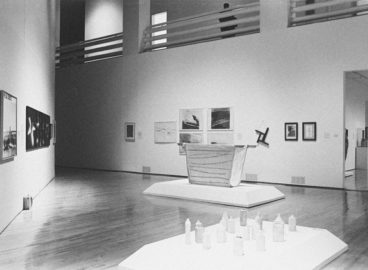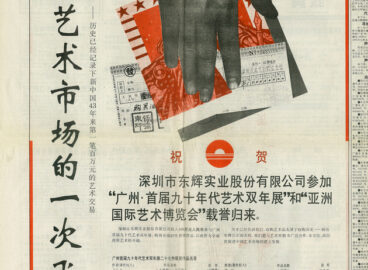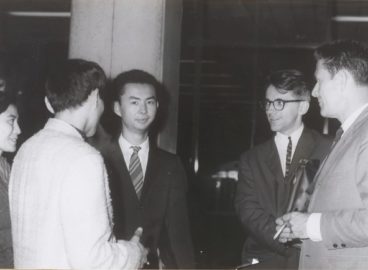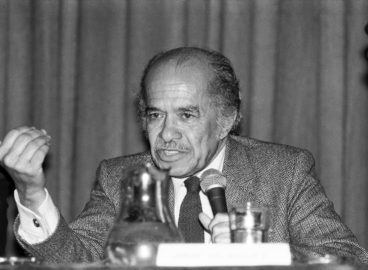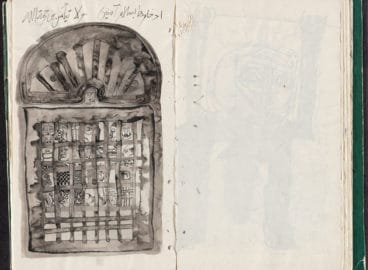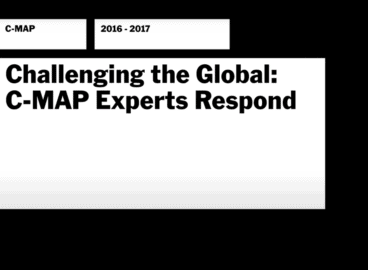Rachel Weiss, curator, writer, and professor at the School of the Art Institute of Chicago, was invited to MoMA to speak about the exhibition Global Conceptualism: Points of Origin, 1950s–1980s, which she co-organized in 1999 with Jane Farver (who also came to talk on the subject), Luis Camnitzer, and an international team of curators: Okwei Enwezor, Reiko Tomii & Chiba Shigeo, Claude Gintz, László Beke, Mari Carmen Ramírez, Peter Wollen, Terry Smith, Margarita Tupitsyn, Sun Wan-Kyung, Gao Minglu, and Apinan Poshyananda. Weiss and Farver (whose talk can be accessed here) were asked to reflect on the exhibition—its challenges, failures, and successes—fifteen years after it was seen at the Queens Museum in New York.
This text was part of the theme “Global Conceptualism Reconsidered” developed in 2015. The original content items are listed here.
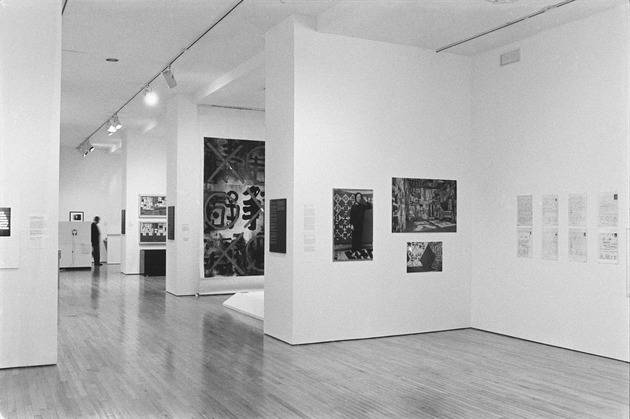
I think the most basic issue that we dealt with in organizing Global Conceptualism is one that hasn’t changed much in the years since—how to reconcile the process of exhibition-making with the messy assembly that any project with global reach necessarily entails. Curating usually has a premise of connectedness—series, progressions, resonances, echoes—meaning that an exhibition narrates something and adds up to something. It’s about asserting why things should be seen together. But curating globally—at least the way we experienced it—meant accepting a very different kind of aggregate. This was exacerbated, more then than today, probably, by the fact that there’s a natural tendency to read something unfamiliar in terms of its likeness to something known: so our primary task was to present a lot of unfamiliar work as much as possible on its own terms, rather than as a corollary to the conceptualist history that was already well established.
Our basic starting point was the sense that Conceptualism had been an extremely supple cultural tool, able to contend with the volatile social and political circumstances that existed in many parts of the world in the postwar period. Therefore what we wanted to do with the exhibition was look at a broad array of places and moments in order to see how art had answered those circumstances. The show argued that there were many different modernities in all those different places, and that Conceptualism arose variously across those locales and from those modernities.
Underlying all of this was an intuition about the particular suited-ness of Conceptualist practice to undertake such ambitious tasks. We suspected that this came from Conceptualism’s interest not only in ideas, as is often claimed, but in their transmission. Ideas in themselves could be just another version of the object of art, even if a dematerialized one: but ideas in motion immediately pushed to the fore questions about who receives them, and what happens as a result.
The Term “Conceptualism”
However, those ideas—especially their transmission and the people to whom they were conveyed—were very different from one place to another, dependent on obvious factors like cultural and political histories but equally on the facts of infrastructure (communications technologies, for instance, or means of travel and transport—something as basic as air routes—or information sources and channels) and so even the one connective tissue in the project—namely, the idea of Conceptualism—had to be an extremely accommodating container. There was no unanimity on how the word was used, if it was even used at all: it sat differently in relation to artistic and aesthetic precedent and in relation to the “mainstream” (in some cases artists were eager for affiliation, in some cases they were adamantly opposed to it, and in others they were indifferent to the whole question). This was no less complicated a landscape than the one in which we ask questions about art overall; in a global context are we on any kind of solid ground if we assume that the term carries enough intrinsic meaning to make “art” comprehensible as art, no matter the context? We had an intuition about Conceptualism, and we had another one about what it might look or feel like if so many different and often-unconnected strands of artistic activity were brought together, but I think that was about all that we had any solid sense of when we decided to do the show.
We started out with a pretty basic premise—we could call it anti-colonialism 101, rejecting the geographical limitations of how Conceptual art was usually mapped. As we got further into it we shifted into a more postcolonial position, no longer centrally focused on simple dynamics of exclusion and more interested in difference. This happened basically because the works that the curatorial team were bringing to us didn’t fit any unitary definition. For instance, we had begun with an assumption that Conceptualism, as a protagonistic force, did its most important work in public space, retaking control there against the repression of military rules, etcetera. But it became clear very quickly that our understandings of public and private space—derived almost entirely from experiences in the US and Latin America—didn’t hold for lots of other places. We knew about apartment art in Moscow, but we also knew about the bulldozer show,1The Bulldozer exhibition was held on September 15, 1974 in the Cheryomushki district on the outskirts of Moscow. Aiming to exploit a loophole in government regulations, the group of exhibiting artist was led by the Neo-Expressionist painter Oscar Rabin and Aleksandr Glezer, a poet and collector of unofficial art. For more information, see Laura J. Hoptman and Tomáš Pospiszyl, eds., Primary Documents: A Sourcebook for Eastern & Central European Art since the 1950s (New York: The Museum of Modern Art, 2002), pp. 67–77. and so when I was doing preliminary research in Prague and Budapest, one question I asked a lot was about works in public space. I quickly realized that the question was irrelevant for most of the artists I was talking to since they had viewed public space as totally coopted and corrupted, and for them the space of dissent had been private and hermetic.2For a recent analysis of this tendency, see Klara Kemp-Welch, Antipolitics in Central European Art: Reticence as Dissidence Under Post-Totalitarian Rule, 1956–1989 (London: I. B. Tauris, 2013). So gradually our position as the conceptualizers of the project became less about the map and more attuned to particularities.
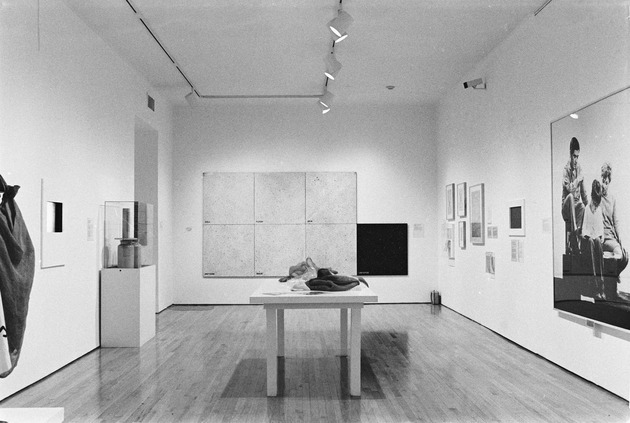
It was certainly argued at the time that what we wound up with was a compendium rather than an exhibition—meaning, I guess, that the show was too baggy to make any clearly focused point. And that’s probably the basic disagreement about it on a meta-level anyhow, because we were pretty clear from the get-go that a sharply thematized exhibition just wasn’t a viable approach and that attempting to make everything fit into any kind of neat schema would fail, by definition, to capture the diverse range of practices, aesthetics, meanings and ambitions that Conceptualism had been the site of. Some recent comments by Victor Burgin are useful here to understand the idea we had about the exhibition as narrative: “A historical event,” he says, “is a complex of fragmentary and often contradictory representations—archival, fictional, psychical, and so on. Hollywood depictions of historical events tend to coat such representational complexes in a sticky layer of unifying ideology, a mix of consensual categories, stereotypical crises and predictable narrative conclusions. To show the event ‘as it really was’ is not an alternative. It never ‘really was’ any one thing—past and present alike are sites of contestation where radically different perspectives collide.”3Victor Burgin, “Other Criteria,” Frieze no. 155 (May 2013): p. 206; http://www.frieze.com/issue/article/other-criteria/
Structure of the Curatorial Team
This brings me to the question about the structure of the curatorial team. The horizontality of the team—an approach that was then taken up in some other big international shows in the next years—was a completely obvious choice for us. We did it that way for a couple of reasons. First, the three of us felt that it was basic to the ethic of the show and the whole idea of the project that there should not be a strong centralized narrative. If our goal was to look at how Conceptualism worked in all those places, then we had to allow each narrative to take its own shape. We saw our role as, first of all, convening, then looking for the threads that developed between the various sections—looking after the emerging shape of the whole. But it was always clear that the show would be a loose confederation rather than a unified body. The other reason for the collaborative curatorial structure was simply that the three of us had no expertise in a lot of the ground we wanted to cover, and it was obvious that others were much better suited to the job. So the structure of the team was our way of building an exhibition that did not, in its form, betray its political commitments.
The decision we made to install the show by geographic section rather than thematically was a related structural/philosophical issue. It boiled down to the same question: was our point to assert that conceptualism grew into a shared language, or that it was the specificities in how it arose and played out that mattered most to us? Because so many of those “local” histories were still basically unknown—both in NY and even in their home sites—it would have been premature to install the show according to thematic or topical affinities, which inevitably would have reinforced the dominance of the work that was already known, with all the new material being consigned to some kind of offshoot status.
The Global
It’s worth talking a little about the word “global” here. We debated a lot about using it because, if I remember correctly, at the time globalization was being talked about as a process that produced ubiquitous sameness when, in fact—and especially in the cultural sphere—that sameness was real only on the most superficial levels. The alternative would have been “international,” but that word was still too weighted down with colonial and imperialist connotations—for example, as in “international style.” Both terms seemed to indicate a kind of geographical flattening that was the opposite of what Global Conceptualism was meant to be about. We wanted to signal a different kind of relation, which was neither made up of vectors all pointing from the same few places out to all the other places, nor fatally relativist—and although we were uncomfortable with its implications of comprehensive coverage, “global” seemed the better compromise.
Global Exhibitions after Global Conceptualism
It might be useful at this point to reflect on some of the projects that have taken up from where we left off, to see how they’ve pushed further and begun to work out some of the cans of worms that we left open. Those challenges are—to list the most important ones—how to go beyond simply expanding the map, to work through what it actually means to have all those different models on the table and accept that they don’t fit together neatly but that they still do belong together; to look at the interconnections—both interpersonal and temporal—among the various artists and works and moments; and finally, how to deal with the inevitable canonization effect when fresh bodies of work enter the international, not global, exhibition system.
The first issue, namely, of curating all that difference, turns out to be a challenge to the idea of an exhibition, at least of an exhibition as an essay or a thesis. It also suggests a more fragmented kind of expertise and authority on the part of the curator. The second, about linkages, begins to create a more dynamic mandate for the exhibition, as opposed to the more static portrait that we were able to construct. And the third one suggests a need for a further iteration of institutional critique, in which the trajectories or life cycles of works and histories themselves become more transparent. I’ll try to address these three questions by looking at a few shows that I’m aware of, which start from a premise related to our own.
These go in two different directions— exhibitions interested in sketching a ‘global’ picture, and ones committed to re-reading recent art histories—and, especially, conceptualist ones— in the name of rescuing neglected but crucial legacies. Of the former, the general approach seems to be—as it was for us—to define “a globalism which acknowledges global links, but insists on the differences among movements ‘spurred by local conditions and histories.’”4Frazer Ward, review of the exhibition in Frieze no. 48 (September¬–October 1999); http://www.frieze.com/issue/print_back/global_conceptualism_points_of_origin_1950s_1980s And with regard to the latter, these are projects that arise from an urgent sense of loss, and of the need to recover, reclaim, or reactivate histories that have been systematically lost or hidden. Not surprisingly, those projects have cropped up in places still very much impacted by the societal traumas of the second half of the 20th century—dictatorships, malignant state socialisms, totalitarian regimes, the forced amnesias of neoliberalism in Latin America, and so on.
Century City, at the Tate [Modern] in 2001, argued for the centrality of cities in the emergence of modernity, and therefore selected nine cities in Africa, Asia, the Americas, and Europe that have “acted as crucibles for cultural innovation.”5Iwona Blazwick, ed., Century City: Art and Culture in the Modern Metropolis (London: Tate Publishing, 2001), p. 8. Each of the sections of the exhibition focused on “flashpoints generated by artists and other cultural practitioners.”6Ibid. Century City’s curatorial structure was like what we used in Global Conceptualism, framing each city as the site of “one of many modernisms” and assigning each to a curator who could work from firsthand knowledge of it. Because they were looking at cities rather than art movements, I think they had a more aerated platform, which in turn made it possible to move more easily among a lot of different kinds of cultural production—artworks, sure, but also posters, books, photojournalism and documentary, and so on. It seemed to me at the time that that kind of flexibility gave a less preconditioned kind of space for looking at global complexity and particularity.
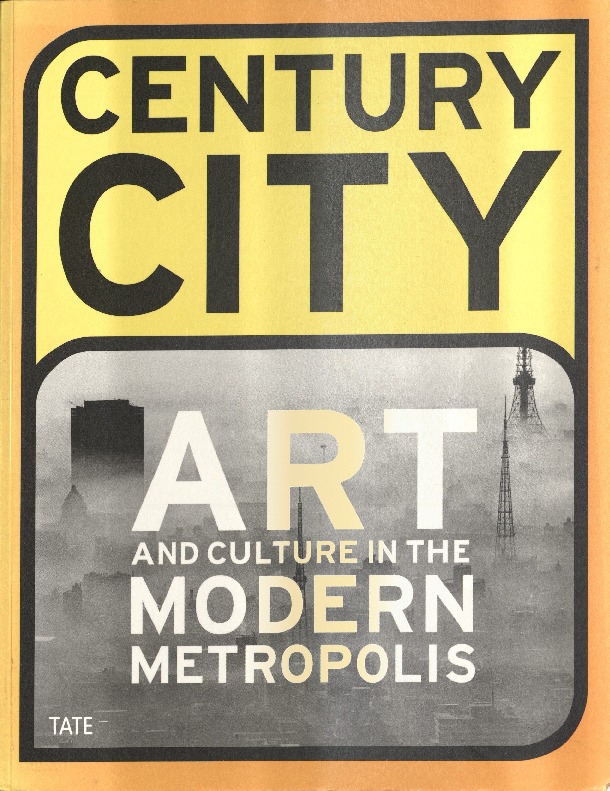
There also seems to be a connection to the Walker Art Center’s 2003 How Latitudes Become Forms, which was a kind of remix bringing together Szeemann’s “Attitudes” with Global Conceptualism’s approach to latitudes. The central trope in that show was what Philippe Vergne called “the reinvention of difference,” taking up Saskia Sassen’s idea that the world of so-called global cities is one in which the shape of the world economy and the influence of new communications technologies have “not only reconfigured centrality and its spatial correlates, but have also created new spaces for centrality.”7Philippe Vergne et al., How Latitudes Become Forms: Art in a Global Village (Minneapolis: Walker Art Center, 2003), p.18. So what we shared in this case was a core interest in developing a different kind of map—not just a more expansive one, but one in which the parts related to the whole in a different way— in order to understand artistic production.
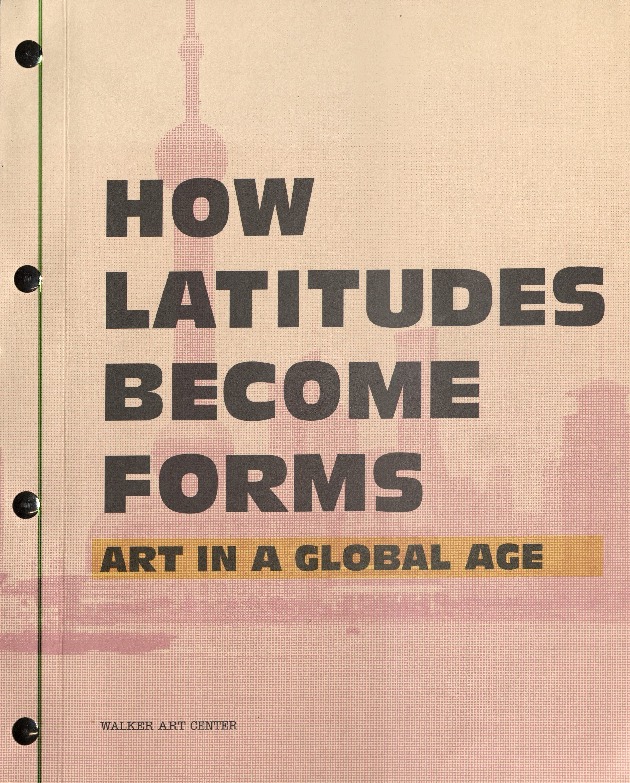
That show, like Global Conceptualism, also presupposed a broadly political investment as its baseline. Vergne asserts that “The key idea of Szeemann’s exhibition was without a doubt liberation. . . . echoing the liberation movements that emerged across the world at the end of the 1960s.” Vergne situated the works within “an aesthetic of thirdness [a term associated with film and cultural theory] that explores how cultural practices driven by political and cultural emancipation can equally commit to aesthetic strategies.”
I didn’t actually see Latitudes, so I’m working off the catalogue here, but there were a few things that seem worth noting. First, the language around global differences and political baselines felt a lot more confident—like these were no longer nearly such contentious things to claim as they had been a few years before. And like Century City, Latitudes looked much more broadly across genres than we ever did, incorporating film, performance and online works to, again, sketch difference across multiple dimensions and expressive orbits.
In both cases, it seems that curating happened in a kind of constellation—something that has become much more common since then—in which there were relatively distinct areas of expertise that were applied to relatively distinct areas of the exhibitions—even to the point that there weren’t extensive primary essays in either catalogue.
The other direction I mentioned is that of shows that have set out to build counter-narratives that recapture lost art histories. Okwui Enwezor’s 2001 project The Short Century: Independence and Liberation Movements in Africa 1945–1994 is key here, bringing a little-known “local” history to light—that of Africa—and situating it very pointedly in relation to dominant accounts. Eric Hobsbawm’s book The Age of Extremes was a key text for us. Hobsbawm reads the global history of what he called the “short century” with an eye to the cultural dimensions of the massive political and economic upheavals that it saw. Okwui’s show adopted a similar methodology, using the format of an exhibition to narrate a broadly cultural history of African liberation movements in the second half of the 20th century. In The Short Century, he developed the arguments he had sketched in Global Conceptualism, exploring different forms of African modernity, contesting the claim that it was simply a variant of Western (and colonial) modernity. He also tied those modernities intimately to the independence and liberation struggles, and the revolts of that period, identifying them as the “twin projects from which the text of African modernity after WWII was fashioned” and which contributed to “an African critical subjectivity that is both a political ethic and a cultural ideology.” The heterogeneity of material that he included in the exhibition mirrored his larger point about the complexity of African modernity and also asserted linkages between aesthetic, ideological, political, and other sectors.
From 2006 to 2008, Florian Zeyfang and Lukasz Ronduda’s 1, 2, 3…Avant gardes project was shown in different iterations in Warsaw, Stuttgart and Bilbao. It looked at experimental Polish films and their influence on different generations since the 1920s and was spurred by the curators’ belief that those works, which had been the subject of bannings and prohibitions and were mostly unknown because of that, could form an important historical platform for a lot of the work that they saw being produced in Poland more recently. This, incidentally, seems to me one of the richest parts of their curatorial project, since it was so committed to putting historical works into dialogue with the present while preventing the inadvertent canonization of those historical works—by “canonization,” I mean their de-activation by prematurely settling on a definitive interpretation. I’ll say a little more about this issue of canonization in a moment.

So that was one way they pushed the question further. Another was by looking closely at interactions and networks among artists—which they structured in such a way as to illuminate “local references in an international network of ongoing cooperation.”8EXHIB. CATALOG P. 8, ‘INTRODUCTION’ BY LUKASZ RONDUDA, FLORIAN ZEYFANG This was something we had struggled with: how to present the various links among artists as a way to contextualize their work beyond the simple fact of national or regional origin. We were interested in the many anomalies that we came across—for instance, the fact that Petr Stembera and others working in Prague were in close communication with Chris Burden in California but were hardly connected at all to their counterparts working underground in Budapest or Warsaw. That was an aspect of “globalism” that proved really difficult to translate into an exhibition format, since it was much more of a hypertext than a text.
A related project, with some of the same team members, Subversive Practices: Art under Conditions of Political Repression: 60s–80s. South America/Europe, was organized in 2009 by the Würtembergisher Kunstverein. Iris Dressler and Hans D. Christ led a curatorial team that worked prismatically on the various sites included in the show in order to create a multiperspectival whole. This, again, was a project inspired by the disappearance of a past, focusing on Conceptual art practices from the 1960s to the ’80s that were generated under conditions of military dictatorship and of Communist and Socialist regimes in South America and Europe. It explored artistic practices that not only called into question the traditional conception of art, the institution, or the relationship between art and the public, but that were simultaneously posited against the existing political systems of power, emphasizing the “heterogeneity and divergence of resistive artistic practices.”9Iris Dressler, Introduction, in Subversive Practices: Art under Conditions of Political Oppression, 60s–80s, South America/Europe, Hans D. Christ & Iris Dressler, eds., (Ostfildern: Hatje Cantz, 2010) p.38. This show was an outgrowth of the “Vivid Radical Memory” project based in in Barcelona (2006–7), which was an attempt to catalogue and digitize information on “politicized” Conceptualism in the same two regions.10For more information on the project, see http://www.vividradicalmemory.org/
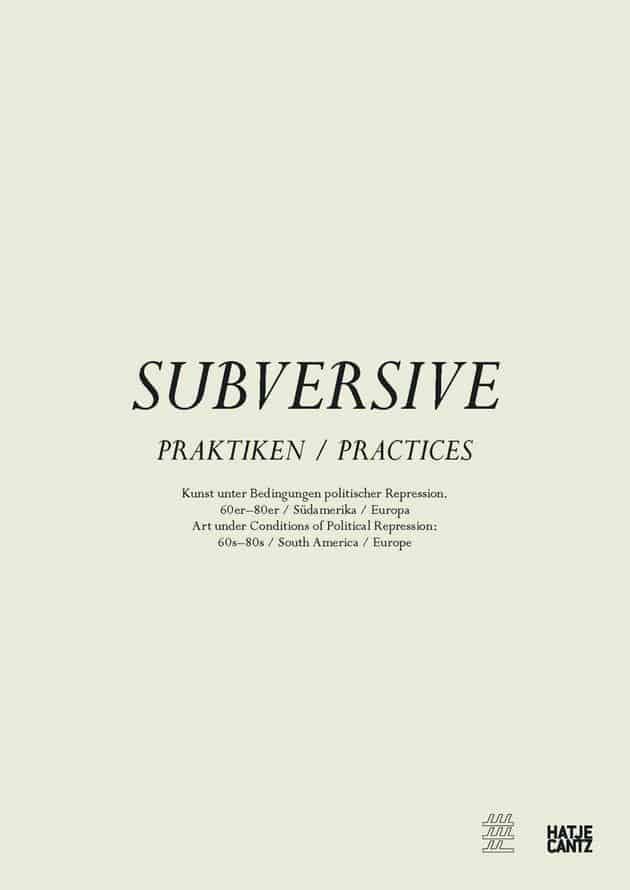
One aspect of “Vivid Radical Memory” that seems really important to me was the fact that curators, researchers and artists from different generations participated—some who had been active in the ’60s and then a lot of young scholars. It was pretty evident in the dynamic at the VRM meeting that the histories being reclaimed functioned differently for different parts of the delegations. For the “historical participants,” there was a heavy dose of vindication attached to the occasion, while for the younger contingent the project felt much more forward-directed, allowing for more open-ended thinking about what those pasts might have to offer to the present.
“Vivid Radical Memory” and Subversive Practices traced their genealogies through a line of efforts to broaden the historiography of Conceptual art. Those efforts mattered to them because they saw in them a strand of dissent that was little known and which provided an important alternative to the classic profile of “the dissident” that had been constructed in the West and internalized in the East. In that sense, their most important contribution is probably the archiving function that both put at the center of their projects. Much of the documentation of the works they studied had been lost, or was in precarious condition, or was forgotten in individual artists’ archives. And meanwhile, after 1989 the growing interest among institutions from the West in procuring some of those works had begun a process of transfer of whatever archival materials there were into the hands of those institutions and therefore out of reach for researchers in those regions. So, both projects expended a lot of effort to “exhume” archival holdings, conserve and stabilize and digitize them—even reconstructing some works that had been lost.
The repercussions of Global Conceptualism that I’ve been most aware of are in Latin America, where there has been a succession of projects which have built on each other.
This line began with _La era de la discrepancia: arte y cultura visual en México 1968–1997 The Age of Discrepancies: Art and Visual Culture in Mexico 1968–1997, organized by Cuauhtémoc Medina and Olivier Debroise in 2007. The period covered in the show began with the massacre of student protestors at Tlatelolco, just before the Mexico City Olympics. The curators chose that as their starting point because, as they saw it, 1968 inaugurated a period of greatly increased cultural repression and much more intense resistance to it on the part of artists.
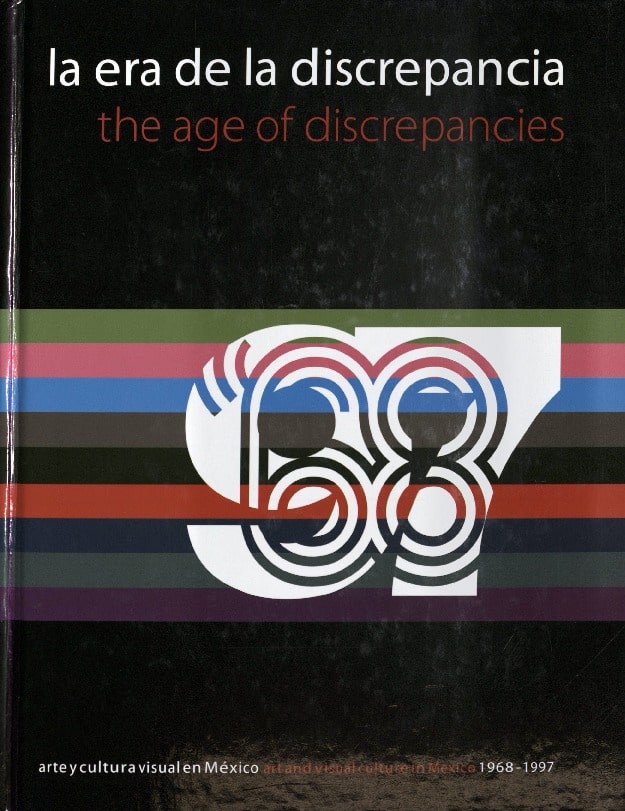
The show ended with the Zapatista uprising, which, as the curators put it, “proposed a creative form of ethnic resistance to global capitalism.”11Olivier Debroise, The Age of Discrepancies: Art & Visual Culture in Mexico, 1968-1997 (Mexico City; UNAM, 2006), p29. But unlike 1968, 1994 didn’t have immediate ripple effects on cultural production. That took a couple of years, so the show’s purview extended to 1997, when the “cultural outcome of the crisis of 1994”12Ibid, p30. had become visible. So the bookends were periods of heightened creative dissent, moments with historic implications for Mexico.
Like the other shows I’ve mentioned, The Age of Discrepancies was a project of recovery, insisting on the importance of a lost national history of art—a project made even more necessary in that moment, the curators argued, because of the insertion of Mexican artists into globalized circuits. In their words, it was “a renegotiation of peripheral genealogies,”13Ibid, p26. by which they meant both internal and external “peripheralization,” since the works they were interested in had been sidelined first of all by the heavy-handed nationalist writ of Mexican state cultural policy. Their goal was to effectively counter what they called the “reigning ignorance of local cultural histories,”14Ibid, p26. reflected in the absence of important local artists from even local museums and collections.
As I mentioned, the curatorial team of The Age of Discrepancies did extensive archival work, locating and rescuing artists’ archives. After extensive debate, they also decided to reconstruct key works that had been destroyed. The overall idea of the project was that it should serve as a broad platform, assembling and making accessible an archive of documents, images, and videotaped interviews, for use by future artists/scholars. It’s worth noting that this project, alone among the ones I’ll mention, was organized under the aegis of a university, so it was able to take on a much more expansive educational role than any of the others.
As with Global Conceptualism, the curators of The Age of Discrepancies looked at “political, aesthetic and ideological dissent” as a unified field, thereby closely tying Mexican Conceptualism to leftist politics, especially in the aftermath of 1968. The history of independent groups was a central axis of the show, featuring the mechanisms of production and distribution that had been invented by the artists themselves. This meant that they paid a lot more attention to networks among artists—including both national and international collaborations—adding to the complexity of the argument they were making about that period of “Mexican” production.
It’s also worth noting that Mexico barely figured in Global Conceptualism, and that The Age of Discrepancies was partly a retort to that exclusion from our own supposedly inclusive project.
The other large-scale project about Latin American Conceptualism I should mention is Perder la forma humana: una imágen sísmica de los años ochenta en América Latina, organized by the Network of Southern Conceptualisms for the Museo Reina Sofia in October 2013. The network is a self-organized collective of around 25 researchers spread across South America and Mexico. They’ve been in existence for several years, having grown out of the Vivid Radical Memory project in Barcelona, but this was their first major exhibition.
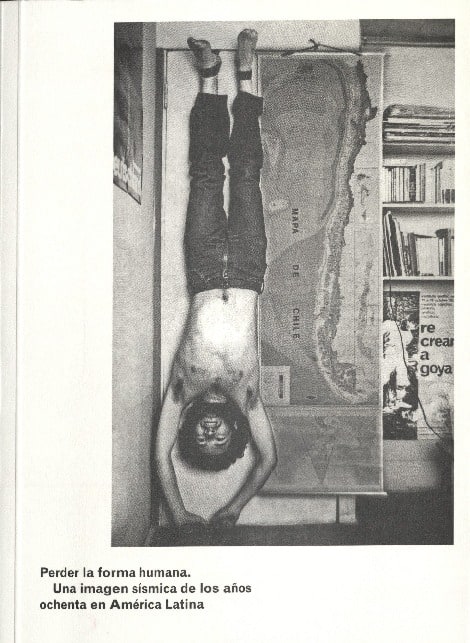
Perder la forma humana was not about Conceptualism per se, but rather about responses—mostly artistic, but not entirely—to the military dictatorships, states of siege and internal wars throughout South America during the 1980s. The title references the fact that the recourse to the body was a primary artistic and political support. They started with the 1973 coup against Allende in Chile, which inaugurated an era of genocidal politics that reached across the continent and brought to a brutal close an era of revolutionary hopes and expectations. The end point was—as with The Age of Discrepancies—the 1994 Zapatista uprising, which marked the opening of a new era of mobilizations and activisms on a global level. Again, these were histories that had been suppressed or badly distorted over time: it was significant that many of the researchers on the team were actually the children of people who had lived firsthand the realities of that brutal period that they were recovering.
The show made a couple of main arguments—first of all, about the centrality of the new kinds of self-organized congregations, assemblies, affinity groups, collaborations, and so on that emerged at the time in response to the closure and militarization of public space. They also contended that, in the face of rampant, state-sponsored violence, those artists devised new ways of doing politics, with much of the project of devising new subjectivities taking shape around some form of an unruly self, What interested them were the ways that work in the 1980s, unlike earlier periods of artistic resistance, had rejected the traditional structures and discipline—both ideological and aesthetic—of left-wing politics in order to develop a more expansive, affective, and polyglot aesthetic register.
I think that Perder la forma humana solved a couple of important problems that had plagued Global Conceptualism. First of all, and like some of the other shows I’ve talked about so far, they were not so exclusively attached to the idea of art, such that everything in the exhibition had to be defensible in those terms. They were more interested in the experiences that those societies had had, and how people had responded. Art was important to them as a way in which people fought back, but it was not the only way they were interested in—and hence their inclusion of Paraguayan arete guasu ritual masks, which have been continually updated for centuries by Guaraní Indians to reenact the various depredations, since the conquest, that the tribe has endured, resisted and survived. The show also included the work of a Chilean photojournalism collective, which provided an important, alternate source of information about the realities of the Pinochet regime. So the universe they sketched in the show was one in which the artists were not separated out from the very broad coalitions that were actively strategizing ways to resist. In fact, one of the most interesting points in the show was the disagreement between artists and the Madres de la Plaza de Mayo over the visual strategy of the siluetas—which set out pretty clearly the sharp political difference between visualizing presence versus absence.15As a way to make those who had been disappeared visible, thousands of protestors drew silhouettes of the human body and posted them in public spaces throughout Buenos Aires. In the case of iconic images like the siluetas, which persisted in several iterations over the course of many years, the exhibition organizers also undertook to show the shifting forms that those images took over time, which in turn indicated the ways that the political discourse was evolving.
The curatorial strategy was also sensitive to the different statuses of the objects presented across the spectrum: from art to politics, from planned to improvised, from art to information, from authored to collective, from public to private spaces, and so on. In view of this, the organizers decided that the display should make continual shifts in scale, density and medium, offering a viewing experience that created a real sense of restlessness. It was a kind of visual corollary to the overall geography of the exhibition content—at once episodic and atomized, comprised of small disturbances that happened sometimes with very little concrete presence, and at the same time there was a kind of buzzing, ongoing continuity that formed a tentative but politically significant sense of common purpose. This is something that might have relevance also in thinking about what might be different in exhibitions wanting to be global in nature—recognizing that art exists differently in different places, has different relations to non-art objects, that sometimes there may be much less distinct or determinate boundaries around it.
Perder la forma humana’s organizers were also very tuned in to the affective registers of the works, probably in part because these histories were so personal and vivid for them—and this affected their approach to materializing them in the form of an exhibition. So they thought about the progression of the exhibition’s narrative in almost theatrical ways, attentive to the rhythms they set up between the traumatic works, for instance, and the defiant ones—slowing down the pace of viewing at some moments and speeding up in others, working with contrasts in lighting and sound and, I think maybe most importantly, avoiding any shallow triumphalism about what any of those interventions had actually accomplished. The show’s subject was societies that had been profoundly traumatized, and while the artistic interventions that had been conceived and staged at the time—and then recuperated in the exhibition—provided spaces of possibility, or protagonism, or refusal, the show was being organized some decades on from that time, and acknowledged that its job of reflection also had some mourning work to do.
Canonization
And finally, I want to go back to what I called the “canonization” issue. Some years ago, art historians in the southern cone were becoming increasingly unhappy with the fact that Tucumán Arde, which was included in Global Conceptualism, had become the obligatory (and often, sole) reference for artistic activism during the 1960s in Latin America.16Tucumán Arde was a wide-ranging activist project undertaken by a collective of artists and activists based in Buenos Aires and Rosario, which undertook to circulate and display ‘counter information’ that exposed the lies of the military regime. Subsequent to Global Conceptualism, it was also included in numerous other exhibitions, including Documenta XII. The historians’ concern was basically that a project that had been a complicated and highly contextual political action had been compressed and truncated into the status of an artwork in order to be translated into an exhibition context. As Miguel López, one of the curators of Perder la forma humana, put it, this created a gradual erosion of its real meanings, part of a “standardization of radical experiences in order that they may establish an appropriate exchange with centralized discourses.”17Miguel López, “How Do We Know What Latin American Conceptualism Looks Like?” Afterall 23 (Spring 2010), http://www.afterall.org/journal/issue.23/how.do.we.know.what.latin.american.conceptualism.looks.likemiguela.lopez In light of this phenomenon, López, Ana Longoni, and some others organized Inventario 1965–1975: Archivo Graciela Carnevale, a show that “introduced itself as a questioning of the process of legitimization and institutionalization of ‘political art.’”18Ibid. Maybe the most important thing to signal here with respect to all this is that, as these local histories are gradually incorporated into the ones that are not considered to be minor—minor, that is, in the sense of minor literatures—it’s crucial to keep the historicization of those works in continual dialogue with practitioners on both sides of that divide, because their legitimization and institutionalization keeps raising new sets of questions in both settings.
It’s interesting to me that Global Conceptualism has resonated in these two pretty distinct directions—on the one hand global shows, and on the other the recapturing of histories— and that those track to particular preoccupations in different sectors of contemporary arts discourse. In places where there has been extreme insecurity of legacy, loss or evacuation of pertinent histories, and so on, it opened a door for reconsidering certain radical legacies in the context of a present that is mightily interested in those as living heritage. On the other hand, in places that have confidently narrated the histories of their own choosing, it seems that Global Conceptualism might have been useful for its experiment in who gets the rights of authorship. For me, personally, I think the most powerful lesson has been about how intensely it can matter to people, even so many years later, that we took a chance and made an exhibition with so little certainty and so much elasticity—for better and for worse. Maybe that’s the real takeaway: that these accounts of the past are received in such various and unforeseen ways might be, in itself, reason enough to continue devising new ways to tell them, to see what can be sparked in the process.
- 1The Bulldozer exhibition was held on September 15, 1974 in the Cheryomushki district on the outskirts of Moscow. Aiming to exploit a loophole in government regulations, the group of exhibiting artist was led by the Neo-Expressionist painter Oscar Rabin and Aleksandr Glezer, a poet and collector of unofficial art. For more information, see Laura J. Hoptman and Tomáš Pospiszyl, eds., Primary Documents: A Sourcebook for Eastern & Central European Art since the 1950s (New York: The Museum of Modern Art, 2002), pp. 67–77.
- 2For a recent analysis of this tendency, see Klara Kemp-Welch, Antipolitics in Central European Art: Reticence as Dissidence Under Post-Totalitarian Rule, 1956–1989 (London: I. B. Tauris, 2013).
- 3Victor Burgin, “Other Criteria,” Frieze no. 155 (May 2013): p. 206; http://www.frieze.com/issue/article/other-criteria/
- 4Frazer Ward, review of the exhibition in Frieze no. 48 (September¬–October 1999); http://www.frieze.com/issue/print_back/global_conceptualism_points_of_origin_1950s_1980s
- 5Iwona Blazwick, ed., Century City: Art and Culture in the Modern Metropolis (London: Tate Publishing, 2001), p. 8.
- 6Ibid.
- 7Philippe Vergne et al., How Latitudes Become Forms: Art in a Global Village (Minneapolis: Walker Art Center, 2003), p.18.
- 8EXHIB. CATALOG P. 8, ‘INTRODUCTION’ BY LUKASZ RONDUDA, FLORIAN ZEYFANG
- 9Iris Dressler, Introduction, in Subversive Practices: Art under Conditions of Political Oppression, 60s–80s, South America/Europe, Hans D. Christ & Iris Dressler, eds., (Ostfildern: Hatje Cantz, 2010) p.38.
- 10For more information on the project, see http://www.vividradicalmemory.org/
- 11Olivier Debroise, The Age of Discrepancies: Art & Visual Culture in Mexico, 1968-1997 (Mexico City; UNAM, 2006), p29.
- 12Ibid, p30.
- 13Ibid, p26.
- 14Ibid, p26.
- 15As a way to make those who had been disappeared visible, thousands of protestors drew silhouettes of the human body and posted them in public spaces throughout Buenos Aires.
- 16Tucumán Arde was a wide-ranging activist project undertaken by a collective of artists and activists based in Buenos Aires and Rosario, which undertook to circulate and display ‘counter information’ that exposed the lies of the military regime.
- 17Miguel López, “How Do We Know What Latin American Conceptualism Looks Like?” Afterall 23 (Spring 2010), http://www.afterall.org/journal/issue.23/how.do.we.know.what.latin.american.conceptualism.looks.likemiguela.lopez
- 18Ibid.
